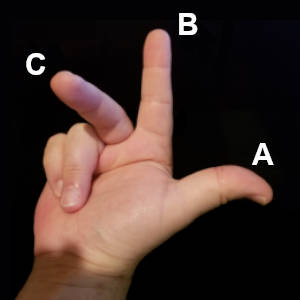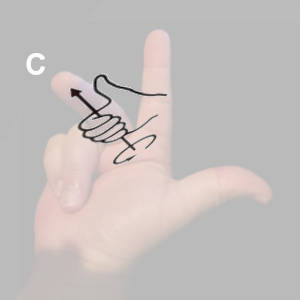Understanding the Right-Hand Rule
Introduction
This topic focuses on understanding the Right-Hand Rule as it relates to the Cartesian Coordinate system.
The Right-Hand Rule
The Right-Hand Rule is a method used to remember the orientation and directions of the axes in the Cartesian Coordinate System in 3-dimensional space. In the images below you can see the proper application of the Right-Hand Rule for the purpose of CNC machining. Each finger represents a positive direction for each axis. Though different machine tools will orient the coordinate system differently, the relationship between these three axes does not change.
| X,Y,Z |

|
As seen in the image below, standard axes of rotation are also defined by the fingers of the Right-Hand Rule.
| A,B,C |

|
Unlike the X, Y, Z axes, the A, B, C, are axes of rotation, so another thing we may want to know is the positive direction of rotation. This can also be found by using your right hand and aligning your thumb to any of the positive axis directions and looking at the way your fingers would be wrapped around that axis.

|
||

|

|

|
Warning: Machine tool manufacturers do not always build their machines to align with the standard direction of rotation for positive and negative directions of rotation so make sure to keep that in mind!






